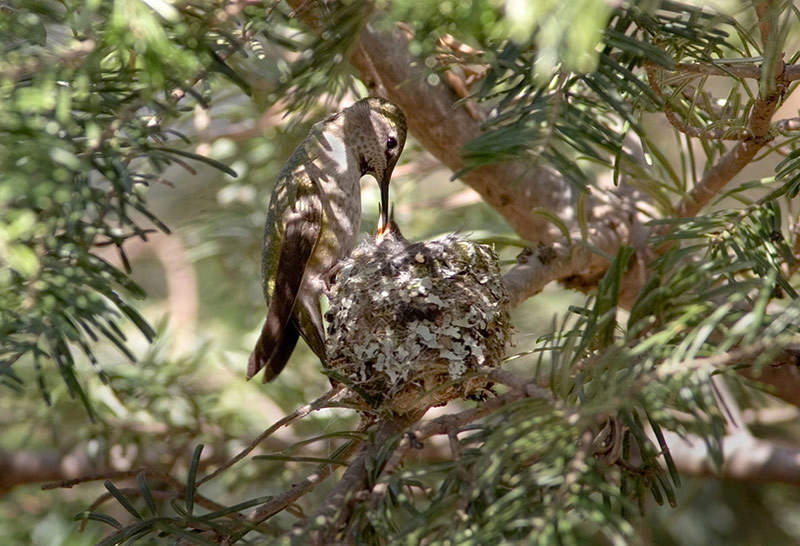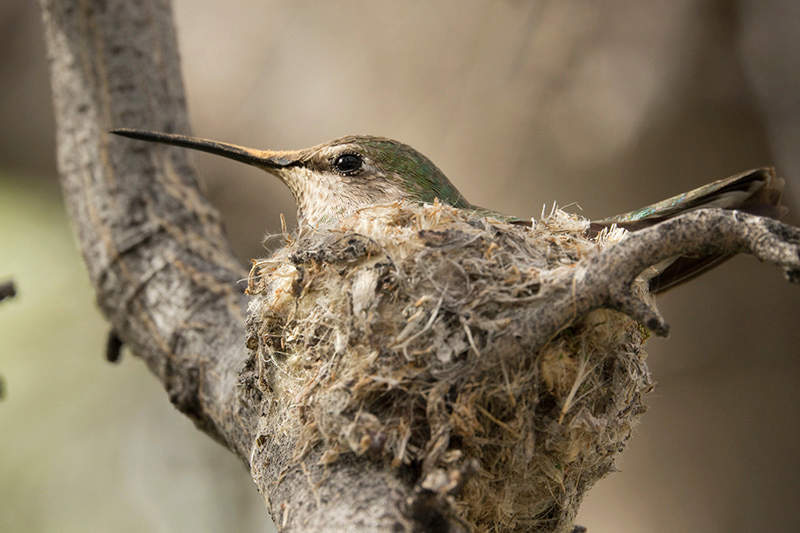How to Spot Female Hummingbirds and Their Nests
Many people are now collecting important information for scientists. These citizen scientists are extremely helpful when they contribute to sharing their observations about nesting birds. Unfortunately, hummingbird nests can be difficult to see, because they are so tiny and well camouflaged, but with practice you may be able to locate one or two.

If you want to find a nest, forget about tracking your male hummingbirds. They don’t assist with building a nest, incubating eggs, or brooding or feeding nestlings. It’s the females you want to keep track of. When a female comes to your feeder, pay attention to the direction she flies when she’s done. After seeing your female fly off once or twice, position yourself at the furthest point where you saw her. Be patient. It usually takes about 12-15 minutes for her to empty her crop (the food storage chamber before the stomach). If she eats her full, she won’t return to your feeder for at least that long. If you see a female before that, it’s most likely a different individual.

After her next feeding bout, again track her as far as you can. If you’re lucky, you’ll only need to do this once or twice before you see exactly where she zooms into a tree, to her nest. Pay close attention to medium-sized branches that are slanted from horizontal to diagonal. The nest won’t be conspicuous—just a bump on the wood.
You can check a nest’s contents or photograph it as long as you don’t disturb the mother. If you bring a ladder, never set it up while the mother is present—wait until she flies off, and finish setting up or climbing and observing as quickly as possible, so you’re well away from the nest when she returns.





